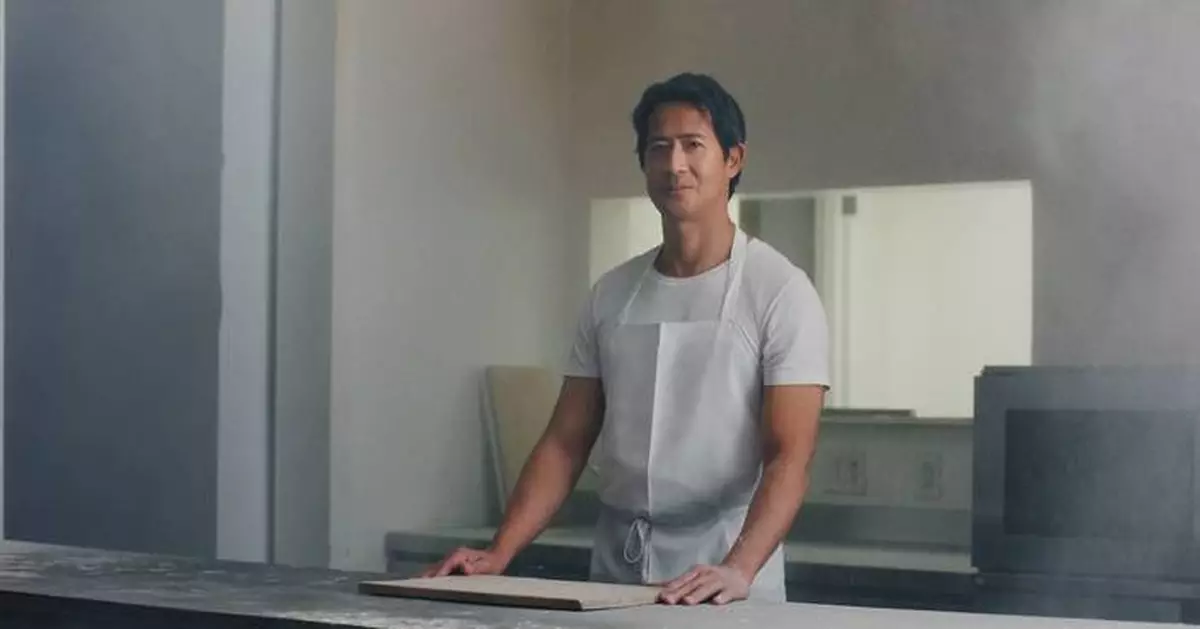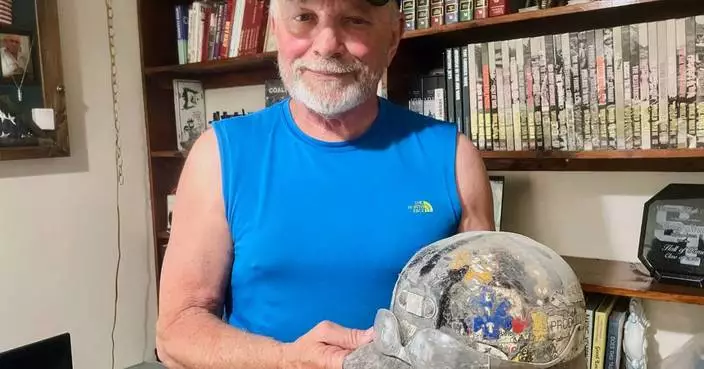NEW YORK--(BUSINESS WIRE)--Aug 13, 2024--
Today, Comcast announced 500 additional small business recipients that will receive comprehensive grant packages that include business consultation services, educational resources, a $5,000 monetary grant, creative production, media schedule, and a technology makeover. The distribution of these grants in five new cities is part of Comcast’s ongoing commitment to supporting the growth of all small businesses, while advancing the objectives of diversity, equity, and inclusion, and community investment. Comcast RISE was created to help businesses and their communities thrive, with a focus on economic growth.
This press release features multimedia. View the full release here: https://www.businesswire.com/news/home/20240808844102/en/
The regions in this round included Atlanta, Houston, Jacksonville, Richmond, VA and southern Colorado. A total of 100 grants per city, or 500 grants overall, were announced today and will be awarded in September 2024, bringing the total number of recipients to date to 14,000.
“Supporting small businesses means investing in the heart of our communities,” said Loren Hudson, SVP and Chief Diversity Officer, Connectivity and Platforms, Comcast. “By empowering entrepreneurs and small business owners with the skills and resources they need to grow and succeed, we help ensure our local neighborhoods can flourish and thrive too.”
Comcast RISE was created in November 2020 to help small businesses hardest hit by COVID-19, from bakeries and barber shops to childcare centers and cleaning services, by providing the grants needed to survive and recover.
The program has evolved from helping businesses survive the pandemic, to helping businesses and their communities thrive with a focus on economic growth.
Grant packages include:
COACHING SESSIONS - Business assessment and coaching that provide business owners with recommendations on how to help grow their businesses.
EDUCATION RESOURCES- 12-month access to online entrepreneurship courses, learning modules and resources for small business owners.
MONETARY GRANT - $5,000 monetary grant.
CREATIVE PRODUCTION & MEDIA - Professionally produced 30-second TV commercial, plus a media strategy consultation and a 180-day linear media schedule. (Taxes and other fees may apply for production and media services.)
TECHNOLOGY MAKEOVER - Computer equipment and Internet, Voice and Cybersecurity services for 12 months. (Taxes and other fees may apply for tech makeover services.)
In addition, any small business owner can visit the Comcast RISE destination on X1 featuring aggregated small business news, tips, insights, and more. X1 customers can say “Comcast RISE” into the voice remote.
Comcast RISE is part of Project UP, the company’s $1 billion commitment to advance digital equity through programs and community partnerships that connect people to the Internet, advance economic mobility and open doors for the next generation of innovators, entrepreneurs, storytellers and creators.
More information is available at www.ComcastRISE.com.
About Comcast Corporation
Comcast Corporation (Nasdaq: CMCSA) is a global media and technology company. From the connectivity and platforms we provide, to the content and experiences we create, our businesses reach hundreds of millions of customers, viewers, and guests worldwide. We deliver world-class broadband, wireless, and video through Xfinity, Comcast Business, and Sky; produce, distribute, and stream leading entertainment, sports, and news through brands including NBC, Telemundo, Universal, Peacock, and Sky; and bring incredible theme parks and attractions to life through Universal Destinations & Experiences. Visit www.comcastcorporation.com for more information.


Comcast announced 500 additional small business recipients that will receive comprehensive grant packages. (Photo: Business Wire)
ANAHEIM, Calif. (AP) — José Ramírez hit three homers and carried the Guardians to a victory Friday night. The slugger claimed another place in Cleveland baseball history in the process.
Ramírez hit a solo homer in the first, a tying two-run shot in the fifth and another solo shot in the ninth inning of the Guardians' 8-6 victory over the Los Angeles Angels, ending Cleveland's three-game skid.
Ramírez's 26th career multi-homer game moved him even with Albert Belle and Jim Thome for the most multi-homer performances in the history of a franchise that began play in 1901. It was also the second three-homer game of Ramírez’s career, which has been spent entirely with Cleveland.
“I appreciate these types of days,” Ramírez said through an interpreter. “Sometimes it’s hard to hit one, and then when you hit three, you just thank God for these type of games, and most importantly because we won.”
Ramírez connected twice off Angels starter José Soriano, homering on two low breaking balls that looked quite similar — both on the way in to the plate and on the way out of right field.
He got his third off a high fastball from rookie Caden Dana, adding an insurance run that helped the Guardians to survive the Angels' two-run rally later in the ninth.
Ramírez also hit three homers on June 8, 2023, at home against Boston. His 259 homers are the second-most in Cleveland history, trailing only Thome's 337.
Ramírez's coaches and teammates could only marvel at another signature night from a superstar who doesn't always get his due.
“Best player in the world,” Cleveland manager Stephen Vogt said with a grin. “Man, he’s some kind of impressive. What a great night. Really picked us up on a night where we needed a lot of offense, and our best player came through the way those guys do. They step up. They know when we need that. They just have a knack for finding ways to do that. A three-homer game, those are so rare in itself, but to be able to witness it and to have him do it the way he did was really impressive.”
Ramírez did it six days after spraining his right wrist while sliding in Kansas City, a mishap that forced him to miss one game and has left him still missing a large chunk of skin on his hand.
The Guardians expect such feats from Ramírez, the six-time All-Star who made the All-MLB first team last season while leading Cleveland to 92 victories, the AL Central crown and the AL Championship Series. He led the Guardians in homers (39), RBIs (118) and stolen bases (41), barely missing the 40-40 club.
He hasn't stolen a base yet in 2025, but he's off to a strong start in the quest for his first 40-homer season.
“You always want good outcomes every time you hit,” Ramírez said. “Sometimes you hit the first homer, and then you don’t hit anything after that. We got good results.”
Ramírez's evening wasn't all good: He botched Luis Rengifo's two-out grounder to third in the third inning for his third error in three games. Jo Adell followed with a two-run single that put the Angels up 4-2.
Vogt said he isn't worried about Ramírez’s rough defensive stretch, calling it “a blip” for the third baseman who finished second in Gold Glove voting last year. The manager also knew Ramírez’s next at-bats would be important to him after an error.
“You always find with the top players in the league, when they happen to make a mistake like that, they seem to make up for it right away,” Vogt said. “It happens all the time. But we’re going to continue working on defense.”
AP MLB: https://apnews.com/MLB

Cleveland Guardians Jose Ramirez, center, celebrates with teammates after a baseball game against the Los Angeles Angels in Anaheim, Calif., Friday, April 4, 2025. (AP Photo/Eric Thayer)

Cleveland Guardians' Jose Ramirez celebrates with teammates in the dugout after hitting a home run during the fifth inning of a baseball game against the Los Angeles Angels in Anaheim, Calif., Friday, April 4, 2025. (AP Photo/Eric Thayer)

Cleveland Guardians Jose Ramirez, center, celebrates with teammates in the dugout after hitting a home run during the ninth inning of a baseball game against the Los Angeles Angels in Anaheim, Calif., Friday, April 4, 2025. (AP Photo/Eric Thayer)

Cleveland Guardians Jose Ramirez, left, celebrates with teammates in the dugout after hitting a home run during the ninth inning of a baseball game against the Los Angeles Angels in Anaheim, Calif., Friday, April 4, 2025. (AP Photo/Eric Thayer)

Cleveland Guardians third baseman Jose Ramirez runs the bases after hitting a home run during the first inning of a baseball game against the Los Angeles Angels in Anaheim, Calif., Friday, April 4, 2025. (AP Photo/Eric Thayer)























































